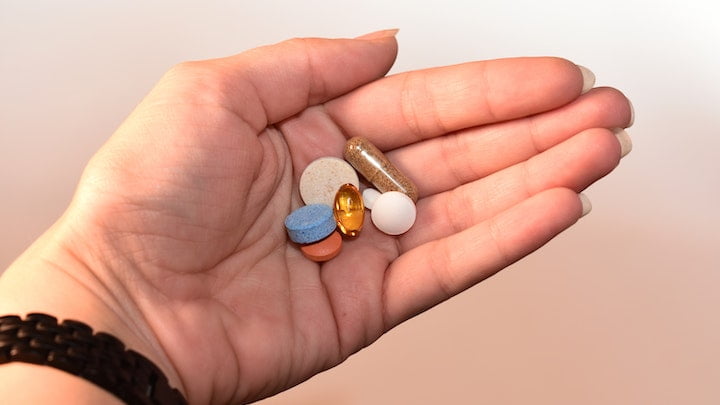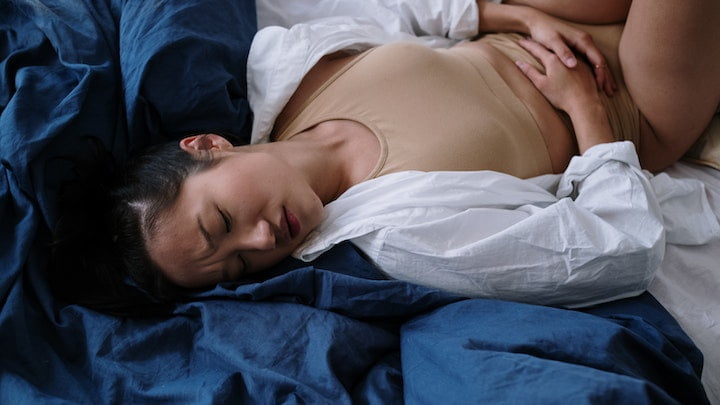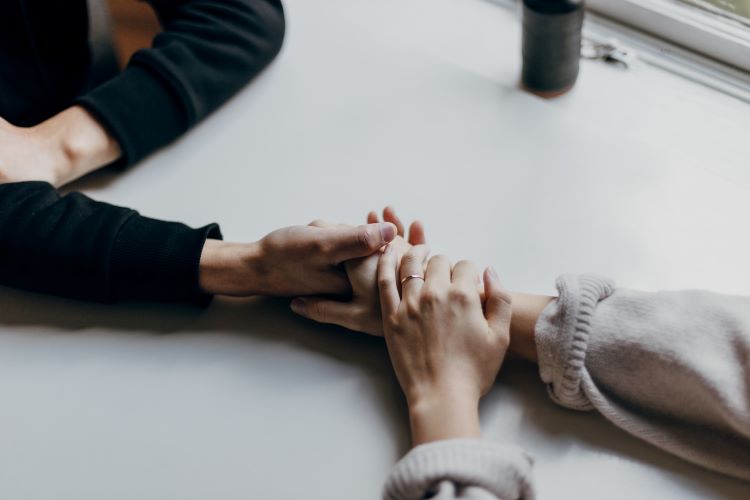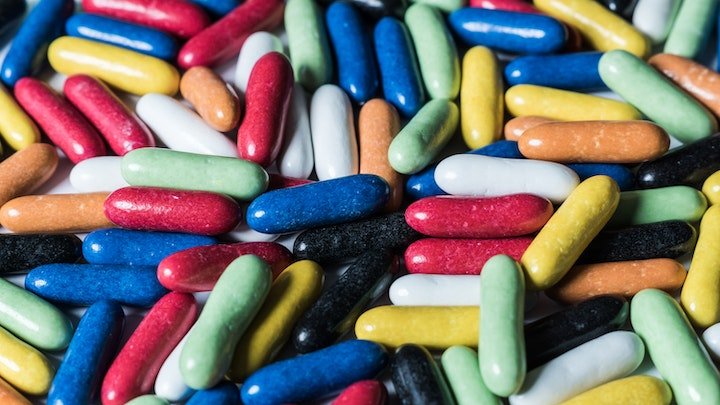Klonopin is a legal medication in the UK, but there are many questions surrounding it that you might want answers to. How it interacts with the body, how long it takes to process, what risks it comes with: understanding the drug is vital, and this blog is here to help!
Klonopin: everything you need to know

Klonopin, the brand name of Clonazepam, is a benzodiazepine. These are prescription medications most often used to help those with epilepsy manage their seizures [1], ease the symptoms of panic disorder, and calm restless legs syndrome.
This category of drug is also used in some instances to ease withdrawal when an individual is combatting substance abuse.
Exclusively available via prescription in the UK, Klonopin can be provided in the form of a capsule or liquid, which are both swallowed. While effective in multiple ways, it is not suitable for those with organ problems, pregnant women, or those who drink alcohol.
What happens when you take Klonopin?

When consumed, Klonopin immediately takes effect in the brain. It works to stimulate the levels of Gamma-Aminobutyric acid (GABA), a chemical synonymous with feelings of calm.
Those with low levels of GABA are more likely to feel panic.
When activated by Klonopin, GABA floods the body, bringing about a range of effects which benefit individuals in different ways depending on their condition. Those with epilepsy will not experience seizures. Those with restless legs will find their muscles relaxing.
As well as this intended spell of calm, Klonopin can also cause a range of side effects when taken.
These can include [2]:
- Impaired coordination and balance
- Fatigue and drowsiness, sometimes resulting in a loss of consciousness
- Memory and problem-solving issues
- Decline in mood, sometimes becoming a depressive state
Klonopin and the body – when does it leave the body?

Because Klonopin consumption can bring with it several undesirable side effects, it is important to understand how long it remains in the body after being taken. Effects like drowsiness, for example, must be considered carefully when an individual drives.
However, Klonopin’s relationship with the body is not a simple one. The drug can remain in different parts of the body for different durations of time.
Urine
Urine tests are one of the most reliable means of checking for the presence of Klonopin in the body.
This is because the drug remains in the urine for longer when compared with other parts of the body.
Studies, however, conflict with one another slightly as to precisely how long Klonopin remains in the urine. 30 days appears to be the maximum amount of time.
Hair
Although hair tests are not commonly used to check for Klonopin in the body, the drug can remain in this area for quite a long time. Roughly, Klonopin can remain in the hair for up to a month.
Blood
Blood metabolises quickly, meaning that Klonopin can be detected there very soon after consumption via blood tests. However, this also means that the drug drains out of the blood very quickly, lasting only for around 92 hours.
Saliva
Klonopin can remain in the saliva for up to 6 days, but testing via this part of the body has been known to produce false negatives and is therefore unreliable.
Klonopin and breast milk

Pregnant women and new mothers must take care when consuming Klonopin. The drug can pass into breast milk, and this can cause heavy sedation in the baby.
It is recommended that an alternative medication is found for women in these situations, but if that cannot be done, then the infant must be monitored closely for signs of sedation.
They should also be watched for any weight changes or developmental issues.
Does anything influence how long Klonopin stays in the body?

It is important to remember that the durations outlined above are generalisations. Individuals are unique, and every person will respond differently to a drug, both in how they experience its effects and how their body processes it.
As a result, there are a number of factors that can impact the amount of time Klonopin remains in an individual’s body.
These include:
- An individual’s age
- An individual’s sex
- An individual’s physical health
- An individual’s weight and Body-Mass Index (BMI)
- The pH of an individual’s urine
- How often an individual uses Klonopin
- How high a dose of Klonopin an individual takes
Is it possible to quicken the process of Klonopin leaving the body?

Klonopin can take a while to completely exit the body, and this can cause individuals to wonder whether there are any ways to hasten the body’s processing of the drug. While there is no guarantee that any single technique will work, there are options to try.
Drinking lots of water
With Klonopin remaining in the urine for so long, one technique at your disposal is to increase the rate at which you urinate. By staying hydrated, you increase the speed at which you will push out the drug, increasing the chance of it leaving the body faster.
Doing more exercise
The age and sex of an individual influence their processing of Klonopin because these are factors which impact metabolism. Therefore, increasing the rate of your metabolism by participating in exercise can contribute to your body processing the drug faster.
Reduce your Klonopin consumption
The body will process Klonopin at a consistent rate, but if more keeps entering the body, then it will take longer to become sober. While it may seem obvious, try scaling down how much you consume within a certain period of time and allow your body to make progress.
Does Klonopin carry an abuse/withdrawal risk?

Although a prescribed medication, it is possible to become addicted to Klonopin. The ability of the drug to sedate worries, ease tensions in the body, and produce euphoric effects in the brain means individuals can become reliant on it in order to function.
The body can start to consider Klonopin as a vital pillar of its chemical makeup, developing a physical dependence on it. With consumption being consistent, it can arrange itself around the drug, meaning that it reacts aggressively when the drug is taken away.
When this happens, individuals are at risk of experiencing withdrawal symptoms. These are the manifestation of the body’s adverse response to sobriety, and can be particularly dangerous. Examples of symptoms include hallucinations, stomach pain, and seizures.
On a psychological level, individuals can start to believe Klonopin to be a necessity of their regular functioning. When sober, therefore, they will experience intense anxiety, panic, and depression.
Those who have developed an addiction to Klonopin experience cravings for the drug, lose interest in their other hobbies and family, and show a lack of concern for the physical, emotional, and financial implications of their behaviour.
How is Klonopin addiction managed?

In the event of an individual forming an addiction on Klonopin, the best way for them to confront the problem and make a full recovery is to engage in Klonopin rehab. This is a treatment plan comprised of three different yet equally important stages.
Klonopin detox
Suddenly cutting out Klonopin consumption will have dangerous consequences for an individual. Not only can withdrawal symptoms arise and cause discomfort, but the problems for which they take the drug in the first place can resurface, such as epileptic seizures.
In order to safely establish sobriety, therefore, individuals must go through detox. This is a treatment process where individuals gradually wean themselves from Klonopin under the watchful supervision of medical professionals to safely become sober.
Detox is gradual yet deliberate. A plan is formed, with individuals progressing at a rate that is effective while remaining safe. Doctors can slow or quicken things in accordance with the situation, and medications can be offered to dampen withdrawal if it does arise.
Klonopin therapy
After detox, Klonopin therapy builds upon physical sobriety to equip individuals with the skills and techniques to combat their psychological reliance on the drug. This can be done via a range of methods, but the focus is always on addictive triggers and where they exist.
These triggers can take many forms. Thoughts, feelings, misperceptions of the world, work anxiety, educational pressure – therapy helps individuals, no matter their triggers, establish why they feel compelled to abuse Klonopin and understand how to limit such behaviour.
In family therapy, for example, the focus lies on the relationships between siblings, parents, and children. Tensions are addressed, feuds are resolved, and discussions are held which aim to find ways of limiting the negative impact being had on the individual in question.
Klonopin relapse prevention
Once an individual has bolstered their defences against psychological temptation, the time comes for learning how to protect the progress they have made. To do this, they will undergo relapse prevention.
In this final stage of Klonopin rehab, individuals prepare themselves for re-entering everyday life. This means re-engaging with the triggers that sparked their initial addiction, and so they need to develop techniques and strategies for managing this task.
Trigger management is usually the focus of this stage in rehab. How can triggers be avoided? How can their influence be minimised? How can individuals ensure they are supported after rehab and maintain a high quality of life?
Is it possible to overdose on Klonopin?

A common concern of those who consume a substance regularly, or know someone who does, is whether there is a risk of overdose. With Klonopin, there is in fact an overdose risk.
It tends to happen when the substance is taken in an excessive quantity or alongside another substance such as alcohol or heroin. Those who experience overdose tend to become drowsy, have slow reflexes, or slip into unconsciousness.
If you discover someone who has overdosed on Klonopin, you should call 999 immediately and request an ambulance. Once this has been done, check that they are breathing and ensure that the area around them is clear and there is no risk of them harming themselves.
While you wait for the ambulance, remain with them and make sure they do not come to harm. If they experience a seizure, do not attempt to touch them, but do take care to make sure that they do not knock anything onto themselves.
OK Rehab: we are here to help
If you use Klonopin or are about to begin using it, you might have a lot of questions about it. After reading this blog, you may still be confused about its risks and dangers, and that’s why OK Rehab are here to help.
Physical dependence on the drug can be a particularly daunting topic, but our friendly team are on hand to answer all of your questions and give you the right information to put your mind at ease or kickstart your road to recovery.
If you need our help, don’t hesitate to get in touch and call us on 0800 326 5559!
References
[1] https://medlineplus.gov/druginfo/meds/a682279.html#why
[2] https://www.ncbi.nlm.nih.gov/books/NBK556010/





